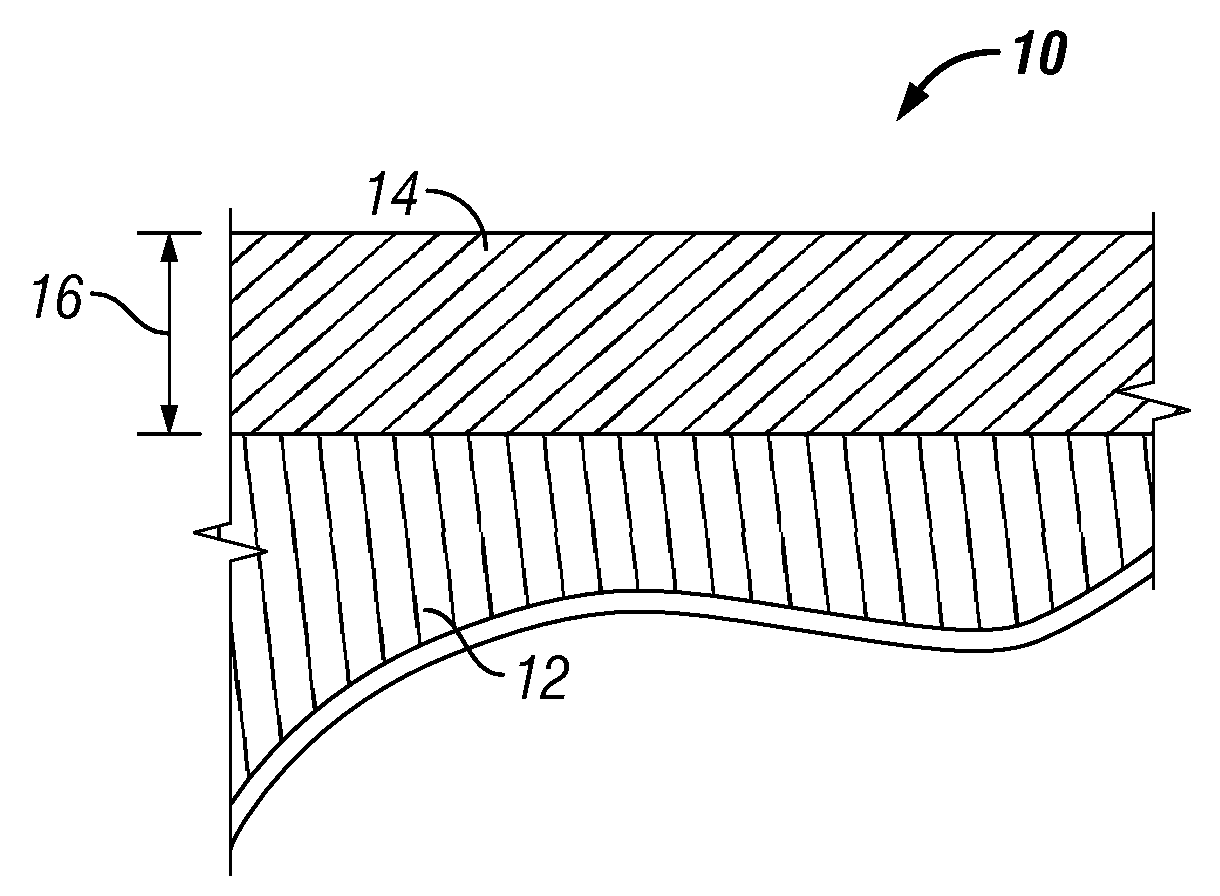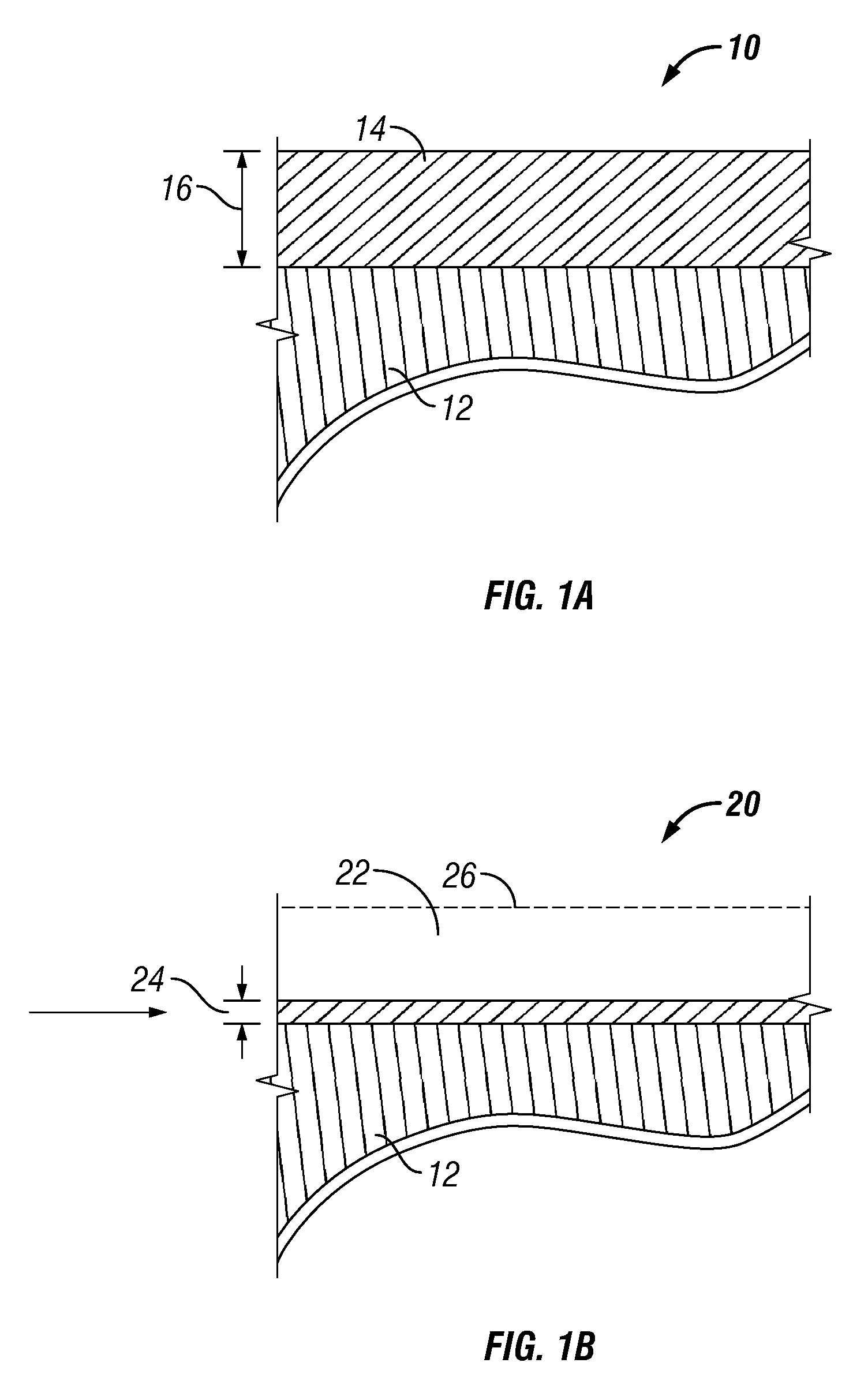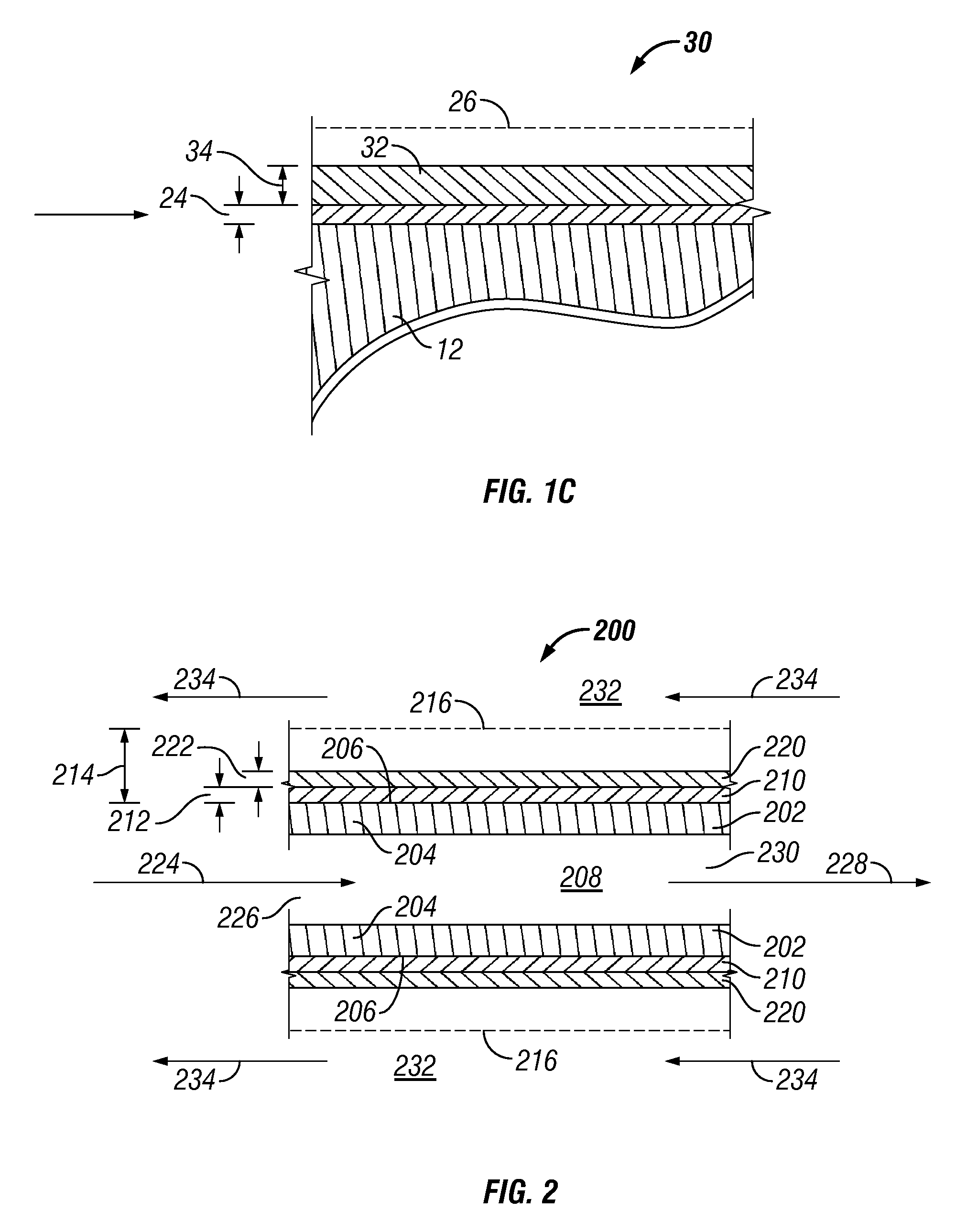Gas separation membrane system and a method of preparing or reconditioning and the use thereof
a separation membrane and gas technology, applied in the field of gas separation membrane system preparation or reconditioning, can solve the problems of not being able to provide for thinner membrane thicknesses, failure to recognize, and unsuitable for high temperature and pressure gas separation processing, and achieve the effect of reducing membrane thickness
- Summary
- Abstract
- Description
- Claims
- Application Information
AI Technical Summary
Benefits of technology
Problems solved by technology
Method used
Image
Examples
example 1
[0055]This Example 1 illustrates the manufacture of a gas separation module by utilizing the inventive method that includes the removal of a substantial portion of the layer of a gas-selective material that has been deposited upon a porous support as a membrane layer of a gas separation module (system). The membrane layer of the gas separation module is formed by deposition of a porous layer of a first material that is abraded or polished followed by the deposition of a second layer of a palladium.
[0056]A gas separation module was manufactured using a method similar to the one described in detail in Example 2 of U.S. Patent Application Publication US 2004 / 0237780, which publication is incorporated herein by reference, followed by the further preparation of the gas separation module using the inventive method. The porous support used in the preparation of the gas separation module was a 2″ OD×6″ length duplex Inconel porous tube obtained from the Mott Corporation. The support tube wa...
example 2
[0059]This Example 2 illustrates the method of reconditioning a gas separation module or membrane system that has been placed in service and, then, subsequently developing a leak in its dense layer.
[0060]A composite gas separation module (module B) was prepared using a 1″ OD×6″ length duplex Inconel support provided by the Mott Corporation.
[0061]Module B was prepared by vacuum deposition of a palladium eggshell catalyst, provided by CRI Catalyst Company, on the duplex support. The eggshell catalyst consists of a material that is spray dried onto alpha alumina particles in such a manner that the material added is only found on the surface of the alpha alumina. A description of the palladium, i.e., noble metal, eggshell catalyst is presented in detail in the copending provisional patent application, filed Nov. 8, 2006 and having application No. 60 / 864,876, which is incorporated herein by reference. The layer of palladium eggshell catalyst was then plated with a layer of palladium unti...
example 3
[0065]This Example 3 illustrates the method of reconditioning or repairing a gas separation module or membrane system that has been damaged during its manufacture so as to cause a leak in the dense layer of the membrane system.
[0066]Module C was made by the same method as described in Example 2, but during its production and after a gas dense membrane layer of 6 microns was formed, the membrane layer of module C was damaged resulting in a leak. Module C was then repaired by removing a substantial portion of the membrane layer by abrasion with successively finer aluminum oxide sandpaper following the grit progression of 1000, 1500, and 2000. The surface of module C was then polished to a mirror-like finish using an ultra-fine abrasive polishing paste comprised of 0.3-micron alpha alumina particles to provide module C with its membrane layer having a reduced membrane thickness below the thickness of membrane layer of the original module C. An overlayer of palladium was then applied to...
PUM
| Property | Measurement | Unit |
|---|---|---|
| thickness | aaaaa | aaaaa |
| thickness | aaaaa | aaaaa |
| thickness | aaaaa | aaaaa |
Abstract
Description
Claims
Application Information
 Login to View More
Login to View More - R&D
- Intellectual Property
- Life Sciences
- Materials
- Tech Scout
- Unparalleled Data Quality
- Higher Quality Content
- 60% Fewer Hallucinations
Browse by: Latest US Patents, China's latest patents, Technical Efficacy Thesaurus, Application Domain, Technology Topic, Popular Technical Reports.
© 2025 PatSnap. All rights reserved.Legal|Privacy policy|Modern Slavery Act Transparency Statement|Sitemap|About US| Contact US: help@patsnap.com



